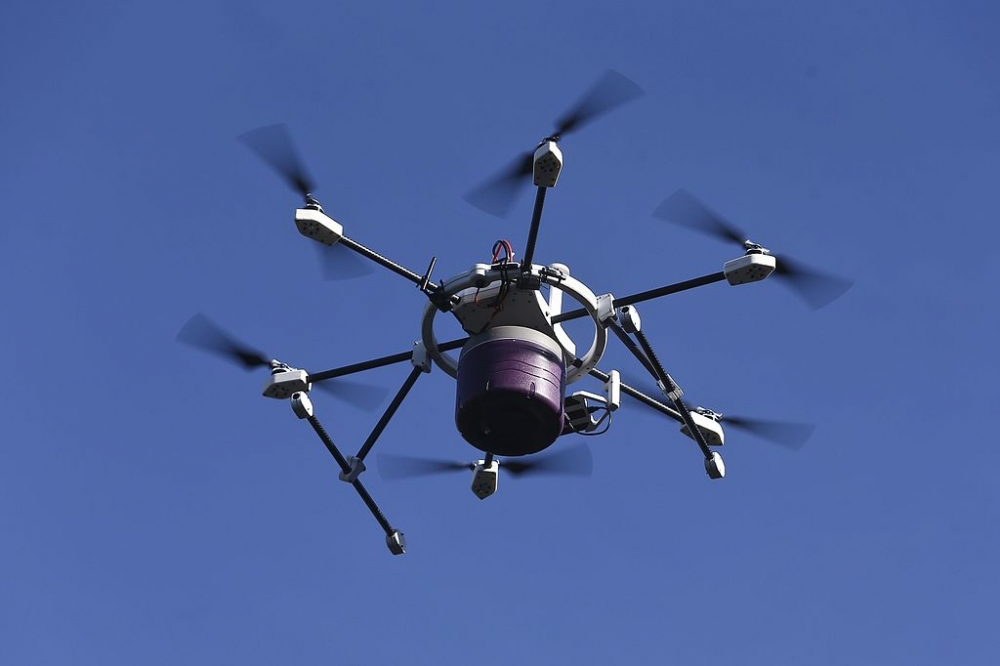Australia’s safety regulator wants to introduce mandatory registrations for all drones weighing more than 250 gms and require recreational users to take an online safety test.
The moves come as the number of remotely piloted aircraft systems (RPAS) is increasing rapidly, with industry estimates there are now “well in excess of 150,000” in Australia, and fears one will hit a manned aircraft are rising.
That hasn’t yet happened in Australia but the air safety investigators say there were 11 reported close calls in January this year alone.
In 2017, there were 151 RPA near encounters with manned aircraft, 72 of which occurred within 20 nautical miles of Sydney Airport.
This compared with 127 incidents reported in the previous four years.
Air New Zealand in March called for jail time for people who recklessly endanger lives with remotely piloted aircraft after a drone came so close to one of its Boeing 777s the crew was worried it had been ingested by one of the engines.
READ: Near miss prompts AirNZ call to jail reckless drone users
While the Civil Aviation Safety Authority favors exempting drones weighing less than 250gms from mandatory registration, it says it is still looking at whether small drones traveling at high speeds can harm humans.
The European Aviation Safety Agency (EASA) has proposed alternative limit based on kinetic energy of 80 joules that takes into account both a drone’s mass and its speed.
CASA says it understands EASA’s rationale but it wants to follow moves in the US and other jurisdictions to exclude the sub-250gm drones.
“However, before doing so CASA intends to complete further research to determine if RPA weighing 250 grams or less and capable of transferring sufficient kinetic energy to cause serious injury when impacting with a human,’’ it said in a report released Friday.
The report argues drone registration should be simple and costs should be based on an aircraft ’s weight and how it is used. This would see commercial operators pay more than recreational users.
The authority favors requiring users to re-register after three years for recreational users and shorter period for commercial operators.
Users will also need to verify their identity using documents such as driver’s license or passport, meaning younger people will need to have their registration completed in the name of a parent or guardian.
The report says benefits to introducing an RPA registration system would assist data gathering on drones, allow it to better target education and provide a disincentive to operate the aircraft unlawfully.
Registration would be an important element in the safe integration of remotely piloted aircraft into Australia’s airspace.
It points to technologies such as electronic identification where an RPA emits a unique identifier code linked to the user in the registration process.
“An application of this technology would potentially permit a law enforcement officer to detect the RPA unique identification code of an RPA that may be operating unlawfully, by using a hand-held device,’’ it says “The unique identification code could then be matched to an RPA registration holder, using a secure interface to the RPA registration database to determine who the RPA registration holder is.”
Recreational drone users may also face a simple online course on safe recreational operations followed by a quiz with a minimum pass mark.
CASA said it recognized many recreational and excluded operators flew lawfully and had a sound understanding of the rules.
It was also aware that many of the more than 900 people who contributed to its review did not support training and demonstrated proficiency for small/recreational drones.
“However, through CASA’s investigation of RPA related incidents and complaints, it is evident that there is an increasing number of RPA operators who are unaware of the legislation about the category of operation (i.e. commercial or recreational) they are undertaking, or who have a poor understanding of the RPA legislation, or have interpreted it incorrectly,” it said.
The agency acknowledged the advantages of geo-fencing, where technology such as the Global Positioning System combines with onboard software to create a “no-go” boundary around sensitive areas such as airports.
“We recognize, however, that the technology requires further development and broad adoption by manufacturers before a mandatory standard can be contemplated,’’ it said.
A separate review into drone safety is being conducted by the Australian Senate and CASA boss Shane Carmody has said the authority would take this and the government’s response into account before making any final decisions on regulatory change.
The authority expects to have an RPAS roadmap completed by the end of 2018 that will cover issues such as airspace integration, unmanned traffic management, detect and avoid technology as well as airworthiness and maintenance.
























